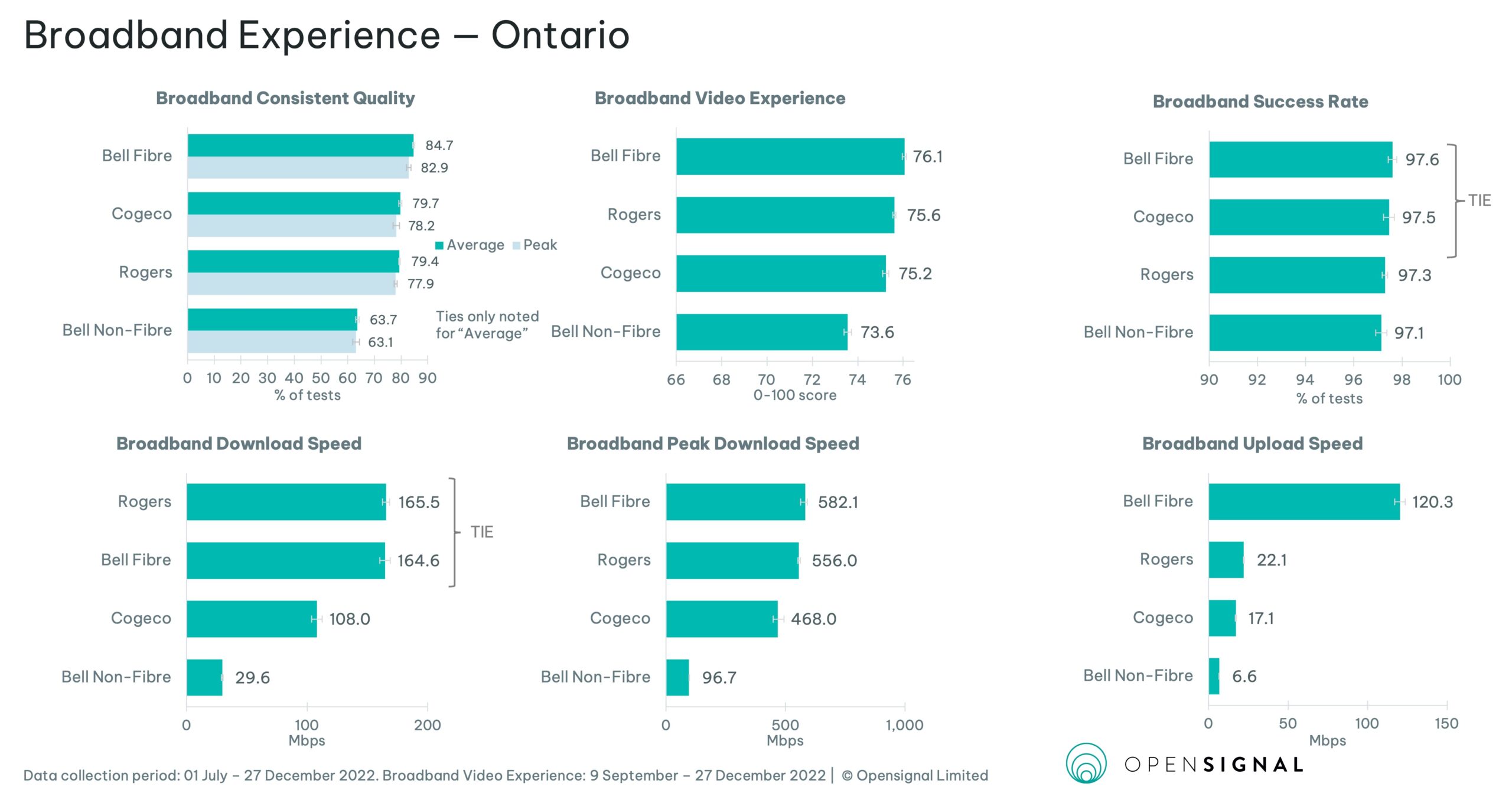
Ever wondered who the best home internet provider was in Canada?
Well, according to a recent analysis by Opensignal, it depends on the province you reside in.
The company found a number of factors contribute to the experience, including location, types of available infrastructure, and available provider providers.
There are two types of fixed broadband in Canada: cable providers using hybrid fibre coax (HFC), and fibre networks, noted as fibre to the premise (FTTP) services.
The analysis examines the experience of Opensignal users in Alberta, Atlantic Provinces, British Columbia, Manitoba, Ontario, Quebec and Saskatchewan.
Since one factor can’t determine the best type of provider, the analysis also examines six different areas, including how consistent the quality is, download speeds, and upload speeds.
Overall, Bell and Telus’ fibre services rate highly in the markets where they are offered. But their availability is limited in Canada.
Albert and B.C.
Both provinces have three fixed broadband providers: Telus Fibre, Shaw, and Telus’s non-fibre services.
In Alberta, Telus Fibre and Shaw are the two major players but Telus outweighs Shaw in five of the six categories. Broadband Consistent Quality for Telus, which measures users’ network experience across a number of different areas, was 2.6 percentage points higher than Shaw.
However, Shaw does have faster download speeds, according to Opensignal users, with an average of 145.8Mbps, 18.7 percent faster than Telus Fibre.
In B.C., Telus Fibre also dominates most catteries. The analysis notices upload speed from the provider “is a clear standout, as users are able to experience upload speeds that are thrice as fast as those observed by Shaw.”

Image credit: Opensignal
Atlantic Canada
Bell, Rogers, and Eastlink are the leading players in the area. According to the analysis, Rogers’ customers enjoy the fastest download speeds, clocking in at 159Mbps.
However, Bell’s fibre network leads in upload speed, which is 3.1 times faster than Rogers and 6.6 times than Eastlink. Along with Eastlink, Bell Fibre also offers the best consistent quality.
Manitoba
Shaw and Bell MTS are the main providers in the province. Shaw has better experience than Bell MTS in five categories. They both share the spot in broadband success rate, which measures Wi-Fi networks.
Shaw’s broadband download speeds are 3.7 times faster than MTS. Upload speeds are 1.8 times faster.
Ontario
In Ontario, Bell Fibre leads scores across the board compared to Rogers, Cogeco and Bell’s non-fibre services.
Bell Fibre and Rogers tied for top download speeds, which are 53 percent faster than Cogeco, the third competitor on the list.

Image credit: Opensignal
Quebec
Quebec is the only Canadian market part of the analysis that lists Vidéotron as a leading provider.
However, the company doesn’t compare to Bell’s fibre services, which has the fastest broadband download speeds in the province at 151Mbps. It’s twice as fast compared to Vidéotron’s network. Bell fibre also has the highest upload speeds in the province, with an average of 115Mbps.
Saskatchewan
This is the only market where Sakstel operates. However, it doesn’t compare to the services offered by its closest competitor, Shaw.
Shaw’s broadband download speed averages 142Mbps, 3.5 times faster than the average download speeds seen by SaskTel customers at roughly 40Mbps.
However, both companies have similar upload speeds.
Image credit: Shutterstock


